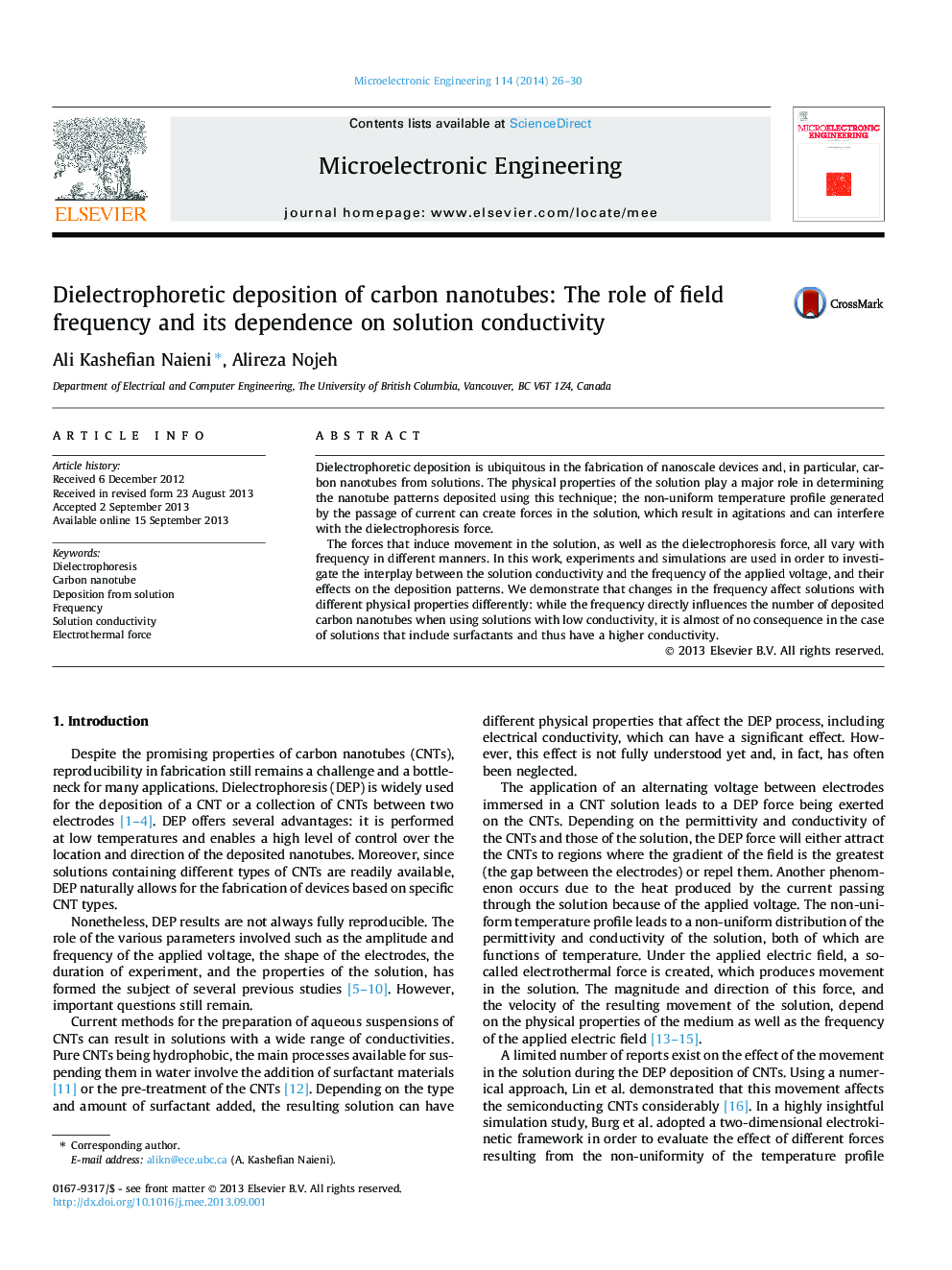| Article ID | Journal | Published Year | Pages | File Type |
|---|---|---|---|---|
| 539092 | Microelectronic Engineering | 2014 | 5 Pages |
•Effect of frequency in dielectrophoretic deposition of carbon nanotubes is studied.•Change in frequency affects the outcome differently for different nanotube solutions.•In low conductivity solutions, frequency affects the Dielectrophoretic force profile.•In high conductivity solutions, change in frequency is not as effective on results.•There is a practical threshold frequency for depositing CNTs with no-surfactant solutions.
Dielectrophoretic deposition is ubiquitous in the fabrication of nanoscale devices and, in particular, carbon nanotubes from solutions. The physical properties of the solution play a major role in determining the nanotube patterns deposited using this technique; the non-uniform temperature profile generated by the passage of current can create forces in the solution, which result in agitations and can interfere with the dielectrophoresis force.The forces that induce movement in the solution, as well as the dielectrophoresis force, all vary with frequency in different manners. In this work, experiments and simulations are used in order to investigate the interplay between the solution conductivity and the frequency of the applied voltage, and their effects on the deposition patterns. We demonstrate that changes in the frequency affect solutions with different physical properties differently: while the frequency directly influences the number of deposited carbon nanotubes when using solutions with low conductivity, it is almost of no consequence in the case of solutions that include surfactants and thus have a higher conductivity.
Graphical abstractFigure optionsDownload full-size imageDownload as PowerPoint slide
